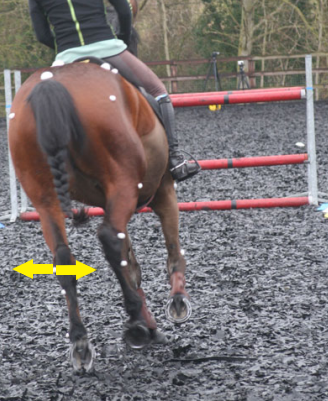
A study on injury-related biomechanical jumping features
There is limited knowledge about the causes of musculoskeletal injury in showjumpers. The objectives of this study were, first of all, to describe features of the warm-up and turn to a fence, approach, take-off, suspension, landing and move-off, secondly to relate these findings to clinical findings and lastly, to identify features that may predispose to injury in showjumping horses.
Ten experienced showjumpers, believed by their owners to be sound and who were in normal competition training, jumped an upright and a parallel fence four times off the left and right reins respectively, after a rider-defined period of warm-up. The jumping was analysed with real-time and high-speed motion capture and detailed subjective assessment of the gait during the warm-up, on the turn and approach to the jump and all phases of the jump.
The mean duration of the warmup was 7 min (range 5–10 min). Although considerable variations in gait and jumping technique were seen within and among horses, trunk lean and hindlimb lean were consistent features on the turn (>45°), placing asymmetrical loads on the musculoskeletal system. Additionally, the inside hindlimb had a greater magnitude of oscillation than the outside hindlimb on the turns. At last, repeated landing with a preferred forelimb leading may result in chronic overload.
In conclusion, repetitive overload through asymmetrical use of the left and right canter leads, inadequate warm-up, and limb instability could potentially predispose to injury.
Expert opinion by Isabeau Deckers
This study argues that, as with human athletes, oscillations of the lower limb joints are recognized as risk factors for injuries, e.g. knee and ankle valgisation. The preference of a particular foreleg in the landing is a second parameter that this study identifies as a potential injury stimulus. As with human athletes, this study thus confirms the importance of optimal strength and stabilization training and of minimizing repetitive, asymmetrical loads.
> From: et al., Equine Vet Educ 30(1) (2016) 41-52. All rights reserved to Elsevier Ltd.. Click here for the online summary.


